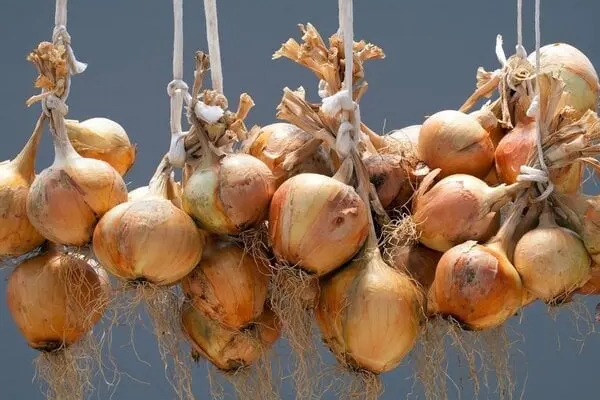Dried shallots are a spice that is always present in Vietnamese kitchens, helping to create a delicious flavor for many dishes. Because shallots are commonly used, when encountering a good quality batch of dried shallots at the market, many housewives buy them in bulk to use gradually.
How to store dried shallots to prevent them from sprouting
Storing dried shallots is often challenging for women because dried shallots tend to sprout, shrink, or become moldy… Is there a way to store dried shallots for a long time without sprouting or spoiling? Apply the following tips.
Choose to buy quality dried shallots
To store shallots for a long time, you need to buy a batch of shallots that meet the following criteria:
– The shallots must be firm, plump, aged and evenly sized. The outer skin is dry, easy to peel.
– The shallots, when held in hand, should not be wet, should not have soft spots or be hollowed at the stem.
– Do not buy shallots that have sprouted because they cannot stay fresh for a long time.
– Do not choose shallots that have a strong smell as this indicates that they may have rotted or spoiled beneath the outer skin.
Store dried shallots in a mesh bag or basket
Storing dried shallots in the refrigerator for a long time is not a good idea because the refrigerator is often humid. In addition, shallots will make your refrigerator smell and also affect other foods.
If you want to store dried shallots for a long time without sprouting, you should keep them in a mesh bag, basket, or net bag to create air gaps. Creating air vents helps the shallots “breathe” easily, avoiding rot and shriveling due to low humidity.
If you don’t have a mesh bag, you can use a long string, tie it tightly around the purchased dried shallots and hang them in a well-ventilated place.

How to store dried shallots to prevent them from sprouting: Hang in a well-ventilated place, avoid direct sunlight. (Photo: Pinterest)
Place the shallot basket or bag in a dark and cool place
The location to store shallots also needs attention to prolong their freshness. You should place the shallot basket or bag in a dark, cool, and well-ventilated place in the kitchen. Absolutely, do not place the shallots in places with too low (below 10 degrees) or too high temperatures.
High humidity makes shallots easy to rot. Meanwhile, direct sunlight and high temperatures make shallots dry out.
Despite being stored carefully, you should regularly check the shallot bag to remove any shallots with signs of rot, softness, or color changes. Avoid mold and moisture spreading to other shallots in the bag, causing widespread spoilage.
Note: Do not use plastic bags or sealed containers to store shallots because they will prevent air circulation, causing the shallots to quickly rot, mold, and sprout.
Avoid storing shallots together with potatoes
Do not store dried shallots together with potatoes because the moisture from potatoes is likely to make the shallots damp and rot faster. At the same time, potatoes easily absorb the smell of shallots, giving the dish a strange taste after cooking.
Tips for storing peeled dried shallots
Peeled or finely chopped dried shallots should be kept cold for longer freshness. If you only need a small amount of peeled or chopped shallots for cooking, you can keep the rest by wrapping them in cling wrap or zip-lock bags and putting them in the refrigerator. With this method, you can keep the shallots fresh for 2 to 3 days.
However, the best way to store peeled dried shallots is to use a sealed box or jar for storing the excess shallots; the smell of shallots will not affect other foods in the refrigerator.
If you want to store them for longer, you can freeze the already chopped shallots. After peeling the dried shallots, rinse them thoroughly, let them dry completely, finely chop them or keep them whole, put them in a zip-lock bag or sealed box, and put them in the freezer. Purple shallots can be stored in the freezer for 1-3 months. Do not store them for too long as it will cause the dried shallots to lose their characteristic flavor.
According to VTC News































